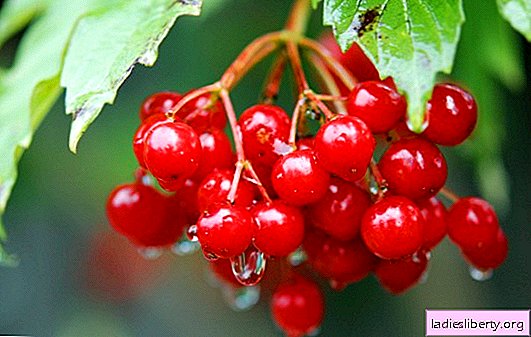
Fans of various unusual garden plants carry out tests with different cultures, and often their experience impresses even experienced summer residents.
Peanut fans will be amazed at the fact that this peanut, which grows beautifully on the bed is actually a bean crop.
Experienced gardeners claim that with proper care, this is an unpretentious and productive plant.
Planting time
Sowing the seeds of this culture on the garden bed is carried out in the second decade of May, after the soil warms up to 15-20 degrees. If the soil has not warmed up to the required temperature, then the planted seeds are likely to rot. Peanuts are sown for seedlings in the first decade of April, and after 35-40 days they are transplanted to the garden. In our climate, for this thermophilic plant, it is desirable to prepare a film shelter, which will be required in case of unexpected cooling.
Soil treatment
Since peanut beans develop deep in the soil, site preparation should be done carefully. The best place for this culture is a sunny place with the most loose, fertile soil. In extreme cases, a short partial shade is permissible. Peanuts grow well after cabbage, potatoes and cucumbers; they cannot be grown after legumes. Cabbage plants significantly reduce the risk of peanut disease with fusarium wilt. Eggplant, pumpkin, peppers, potatoes and tomatoes can be grown nearby.
They begin to prepare the plot in the fall, rhizomes are removed, and the remains of weeds introduce potash and phosphorus fertilizers and dig up the bed. For peanuts, as well as for other legumes, feeding with organic nitrogen will not be useful, for this reason, chicken droppings should be added and fresh manure should not be made. In the spring, when the snow melts on the site, they dig it up again and loosen it well. As a result, the soil on the bed should be airy, permeable and soft.
Planting and caring for peanuts
In the young regions of the country, peanuts are planted on beds with dry, unprocessed seeds. In middle latitudes, it is desirable to germinate or grow in seedlings before sowing, which will allow you to harvest 15-20 days earlier.
Try to get peanut beans by buying 1-2 handfuls of fresh seeds on the market. When buying, choose strong nuts without traces of mold, stains and cracks. The pattern in the form of a grid on the surface should be with a well-defined texture.
Subsequently, if the experiment turns out to be positive, varietal seeds can be acquired or used to plant peanuts and care for it already proven planting material. When grown in home gardens, the varieties showed themselves well:
• Klinsky;
• Krasnodar 14;
• Krasnodar 13;
• Stepnyak;
• Valencia Ukrainian;
• Valencia 433.
Seed germination
You can get a decent peanut crop only if the seeds are properly prepared:
1. Nuclei with a crimson or pink shell are removed from the shell;
2. They are laid out on a damp cloth spread on a saucer. Instead of a napkin, you can use gauze folded in several layers or natural fabric. In order to accelerate germination and activate the growth of seedlings, growth stimulants are added to the water;
3. A drying cloth or gauze is periodically moistened to prevent drying out;
4. The first sprouts can be seen after 5 days, after they grow to 1 cm, they can be planted in the soil.

Seeds after such preparation are sown in open ground or in cups. Sowing in the garden is done according to the 70x20 scheme. After sowing, until the seedlings appear, it is advisable to cover the soil for protection from birds with branches. A scarecrow, which also protects peanut seeds from winged robbers, will not hurt.
Features of seedling technology
As containers for peanut seedlings, you can use plastic or peat cups. Shop soil for seedlings is poured into them, adding coarse sand in a ratio of 3: 1.
Sow nuts like this:
1. The dishes prepared for seedlings are filled with previously prepared soil mixture;
2. Germinated seeds are planted one by one in cups, buried in the ground by 2-3.5 cm;
3. Pots are placed on a tray, covered with plastic wrap and transferred to a warm, shaded place. Regularly open the film to remove condensate, ventilate and water the soil;
4. After the seedlings appear, the trays with pots are transferred to a light visit, where the temperature is maintained at 18-20 degrees.
Prepared seedlings on a cloudy day are transplanted to the garden, the planting pattern is the same as when sowing seeds.
Plant care
Peanuts do not require much, it responds perfectly to ordinary plant care activities:
• Watering. Peanuts often do not need to be watered, only to maintain the soil moist during flowering and the formation of ovaries should be watered abundantly, at least 4 times a month. At the end of the growing season, watering is reduced, and 3 weeks before harvesting is not watered at all;
• Feeding. During the growing season, growing peanuts need to be fed three times - during the formation of the first true leaves, during flowering and when fruit is set. You need to feed only with a mixture of mineral fertilizers;
• Hilling. This crop, as well as potatoes, is cultivated 2-3 times with moist soil, while loosening the soil and removing weeds. Planting and caring for peanuts using timely hilling can significantly increase the yield;
• Fighting diseases and pests. Most often, peanuts are affected by stem and root rot, powdery mildew and Fusarium, of the pests - various caterpillars, thrips and aphids. To combat these troubles I use only authorized drugs.
This culture develops best at a temperature of 25-28 degrees, with a cold snap (below 15 degrees) and during heat (more than 30 degrees), peanuts do not grow and can die. 2 months after planting, the plants begin to bloom, a day later, instead of orange inflorescences, gynophores form - the fruits develop in them. The stems gradually sink to the soil. Gynophors penetrate the soil, in which peanuts are grown at a depth of 8-10 cm. Outgrowths that could not reach the soil die, for this reason they need to be helped by pouring a hill of land under the gynophors.

Harvesting
Peanuts ripen on average 120 days after the emergence of seedlings, maturity can be determined by drying and lodging the stems of the plant.
When harvesting, the bushes are dug up and removed from the soil, after which they are dried in the sun. It is undesirable to tear dry beans from the stem, this will reduce the quality and taste of nuts.
After 1.5-2 weeks, the crop can be cleaned of dry foliage and roots, threshed and stored.

By following these rules, just a handful of nuts purchased on the market can grow a decent crop and create a supply of seed for next year.











